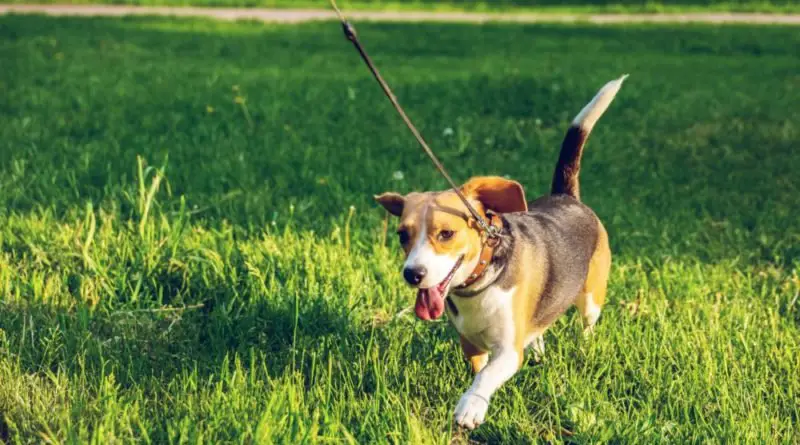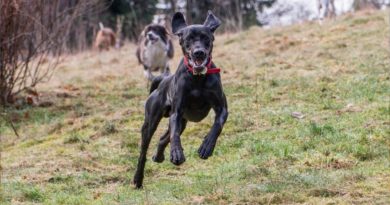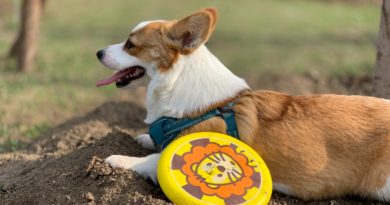Last modified on March 13th, 2020 at 12:26 pm
How to Walk a Dog That Pulls: 5 Tips for Better Behavior
Before you welcomed your new dog into your life, you probably visualized you and your dog getting fit together, going on long, enjoyable walks around the neighborhood, and perhaps even venturing further afield on weekends or holidays. But the first time you snapped your brand-new leash onto your dog’s brand-new collar, you didn’t expect to be dragged down the street by an overexcited pup wanting to sniff and experience anything and everything, all at the same time.
The good news is that leash issues – particularly the tendency to walk ahead and pull – can be easily resolved. Read on for five tips to help you nip this bad behavior in the bud. Then you can go back to your original plan of enjoying leisurely walks with your dog. Once your dog is walking nicely on the leash, check out the ultimate guide to getting fit with your dog.
Why Dogs Pull On The Leash
Before you can understand how best to teach your dog to walk nicely and calmly while on a leash, it’s important to understand why they’re pulling on the leash in the first place. Some people insist that dogs pull on the leash as a way of asserting their dominance or trying to be the “alpha dog” of the pack. Luckily this isn’t the case, as this would be a much more difficult problem to fix.
The real reason is much simpler – going for a daily walk is a highly exciting event in your dog’s life, and they pull on the leash because they’re excited and they want to get going as quickly as possible. For most dogs – except those who are elderly or who have mobility issues – walking with a human is frustrating because humans simply don’t walk as fast as a dog would if they were unleashed. Dogs find it difficult to slow down and walk at a human pace, particularly when they’re so excited to go for a walk and anxious to check out every scent and every interesting object all at the same time.
By understanding why your dog is pulling on the leash, you can help them to learn how to walk nicely. Part of this training includes introducing a little unpredictability into your walk to keep things interesting for your dog and to stop them from getting bored and frustrated. In this way, teaching your dog not to pull on the leash is similar to training your dog to stay calm while traveling – it all comes down to understanding why your dog is behaving that way, and what you can do to help.
Tip #1 – The Right Equipment
Before you can successfully teach your dog to walk nicely on the leash, you need to make sure you have the right equipment. While it’s certainly possible to have your dog walking nicely while they’re wearing a normal leash and collar set, you can make life so much easier by switching to a chest harness.
Not only will a chest harness give you more control over your dog’s body, but it’s also much kinder on your dog. Rather than being pulled by the neck, dogs find it much less stressful to be led by their entire chest. As an analogy, imagine you’re about to cross a busy road and someone behind you wants to pull you back to prevent you from being hit by a car. Would you prefer they pull you back by grabbing the back of your shirt, or by yanking backward on your necklace or necktie?
There is no need to use any punishment-based equipment on your dog, like a choke collar or check chain. Your dog doesn’t need to be strangled to learn how to walk calmly and nicely on the leash.
Tip #2 – The Right Consequences
Many dog owners inadvertently reward their dog’s leash pulling behavior. When a dog pulls on the leash, it’s tempting to speed up your walk or even let go of the leash altogether to give your dog some freedom. However, all this is doing is reinforcing the idea in your dog’s mind that pulling on the leash helps them go faster and get where they want to go.
Instead, your dog needs to learn that when they pull on the leash, everything stops. When your dog is pulling, stop walking. This will frustrate your dog and teach them that the more they pull, the more they will have to stop and wait. Once they can start walking nicely again, the walk resumes. Your dog will quickly learn that the best way to get where they want to go is to walk calmly and that as soon as they start pulling, you will stop walking.
Tip #3 – The Right Alternative
While the above technique is highly effective, it can also be as frustrating for you as it is for your dog. An alternative that is just as effective is to turn and walk in the opposite direction when your dog starts pulling. Rather than jerking the leash to get your dog to follow you, get them excited to do so by issuing a “let’s go”, “come on” or a similar command in an excited, upbeat tone of voice.
This will become a game for your dog, and they will soon learn that you’re liable to change directions at any moment and that they need to walk next to you and pay attention to see which direction you’re going to go to.
Tip #4 – The Right Motivation
When your dog is walking nicely by your side, reinforce this positive behavior by rewarding your dog in whatever way works best. Some dogs respond best to treats, so keep a small bag full of tiny cut-up treats to slip into your dog’s mouth whenever they’re walking nicely by your side. Other dogs are much more motivated by words of praise delivered in an upbeat tone, or physical affection such as a pat on the head or ear rub when they’re doing the right thing. Once you learn what best motivates your dog, be ready to willing to reward your dog any time they’re walking calmly by your side.
Tip #5 – The Right Way To Keep Your Dog’s Attention
Once your dog has the idea, the trick is to keep your dog’s attention on you rather than letting them get distracted by the surrounding environment. Do this by varying your route rather than walking the same predictable way every day. Keep your dog’s attention firmly fixed on you by unexpectedly changing directions, even doubling back or crossing the road without warning. Your dog will love the game and will be forced to fix their attention solely on you as they will never know where you’re going to walk next.
Walking your dog isn’t meant to be torturous and stressful for everyone. In fact, pets can assist you in making healthier and enjoyable lifestyle choices, but first you need to teach your dog some appropriate manners when walking on a leash. By following the five simple tips above, you can stop your dog from pulling on a leash in a positive way and get on with the business of enjoying walk time with your dog.




